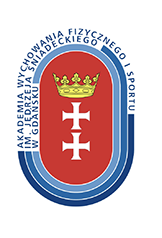Abstract
Introduction. There is a growing number of studies concerning imagery training in young athletes but on a much smaller scale than research in adults. The purpose of this study was to examine the influence of imagery training on children’s soccer skills. (2) Materials and Methods: We conducted two studies. In the first study a sample of 35 subjects, aged between 10 and 14 years, was divided into an experimental condition (18 players) and a control condition (17 players). Each person completed one script from the Sports Imagery Ability Measure (SIAM) and from the Movement Imagery Ques-tionnaire-3 (MIQ-3) and took a performance test on pre-test and post-test. In the second study 40 players, aged from 11 to 14 years, were divided into the control group (12 players) and the experimental group (13 players). They filled out the same questionnaires, as well as the Sports Imagery Questionnaire for Children (SIQ-C). They took part in 6 and 8 weeks of imagery training, respectively. Participants in the control condition performed only the shooting pre-and post-tests. (3) Results: In the post-test, players in the imagery condition obtained better results in soccer skills and in SIQ-C, but not in imagery ability tests. (4) Conclusions: The results supported effectiveness of the imagery training, especially since the intervention was conducted during the COVID lockdown.
Recommended Citation
Budnik-Przybylska D, Makurat F, Przybylski J, Morris T. Effect of imagery training on football players. Balt J Health Phys Act. 2024;16(4):Article3. DOI: 10.29359/BJHPA.16.4.03
Author ORCID Identifier
Dagmara BUDNIK-PRZYBYLSKA; ORCID 0000-0002-5943-4773
Franciszek MAKURAT; ORCID 0000-0002-5869-3669
Jacek PRZYBYLSKI; ORCID 0000-0002-2980-2440
Tony MORRIS; ORCID 0000-0002-2883-7270
Creative Commons License

This work is licensed under a Creative Commons Attribution-Noncommercial-No Derivative Works 4.0 License.
Included in
Health and Physical Education Commons, Sports Medicine Commons, Sports Sciences Commons, Sports Studies Commons



